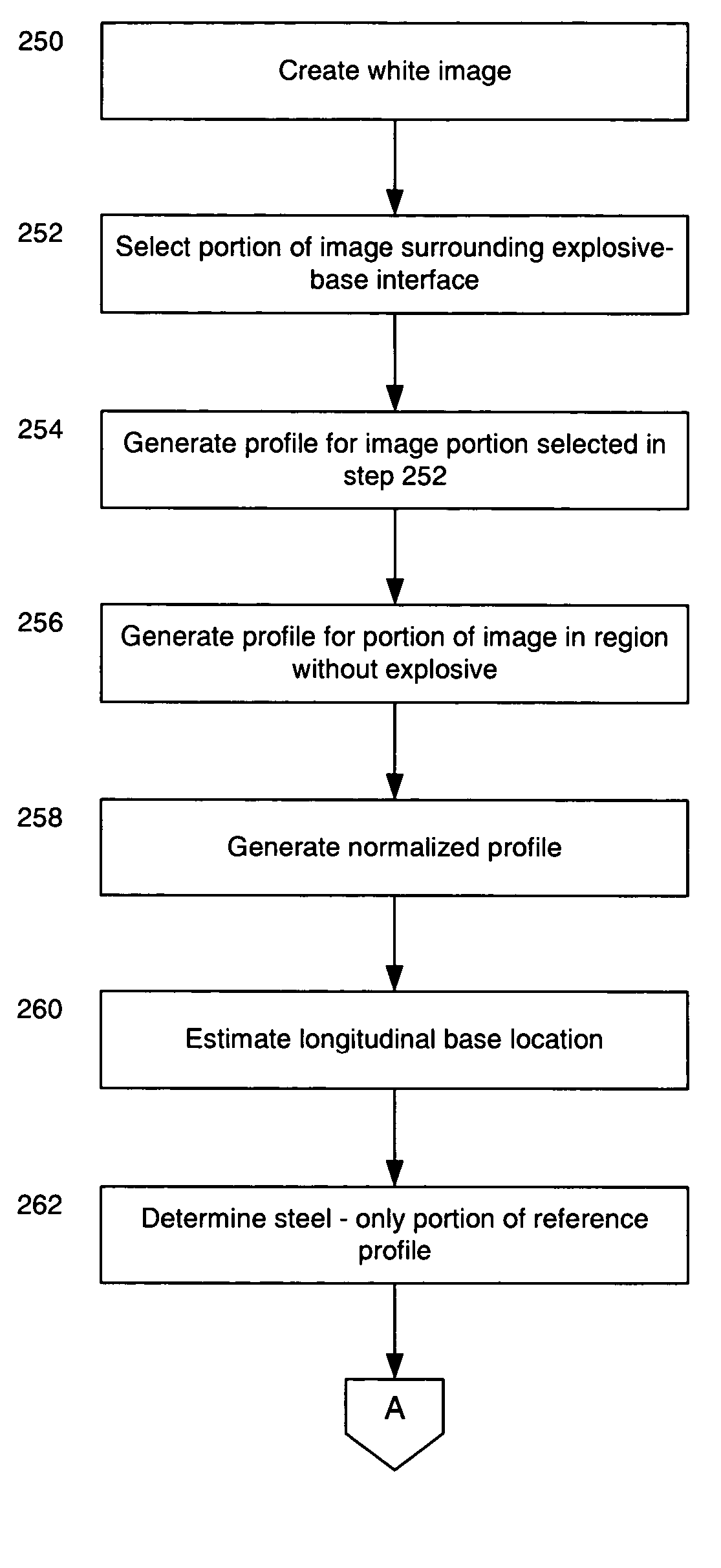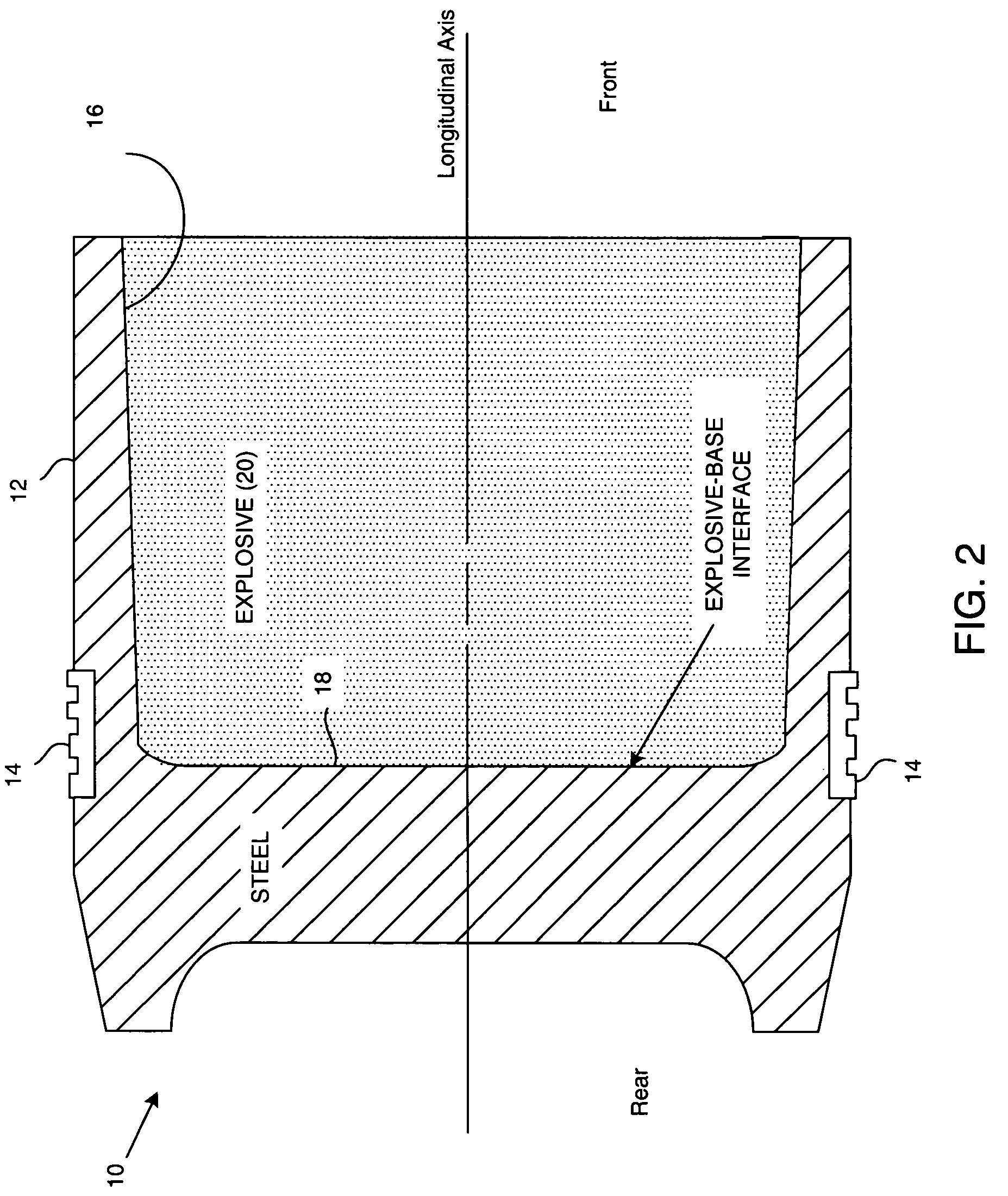Measuring linear separations in digital radiographs
a digital radiograph and linear separation technology, applied in the field of digital radiography, can solve the problems of difficult to distinguish closely adjacent features of high brightness, and difficult to accurately measure the separation between objects
- Summary
- Abstract
- Description
- Claims
- Application Information
AI Technical Summary
Benefits of technology
Problems solved by technology
Method used
Image
Examples
Embodiment Construction
[0038]As used herein, “image” refers to a visual display of an object (or objects) created by illuminating the object(s) with energy and detecting passage of that energy through the object(s). “Image data” refers to the underlying data quantifying the amount of energy passing through a particular portion of the imaged object(s). Image data for multiple portions of the object(s) may be aggregated and otherwise processed to generate an image. In some embodiments, image data represents digitized values of energy intensity detected by individual pixels of a detection array. A data “profile” is an ordered set of data corresponding to a region of an object or objects. In some cases, a profile may be a set of actual data collected during imaging. In other cases, a profile may be a set of actual image data after averaging, normalization and / or other processing. In still other cases, a profile may be an expected set of data for a particular condition of the object(s).
[0039]Embodiments of the...
PUM
 Login to View More
Login to View More Abstract
Description
Claims
Application Information
 Login to View More
Login to View More - R&D
- Intellectual Property
- Life Sciences
- Materials
- Tech Scout
- Unparalleled Data Quality
- Higher Quality Content
- 60% Fewer Hallucinations
Browse by: Latest US Patents, China's latest patents, Technical Efficacy Thesaurus, Application Domain, Technology Topic, Popular Technical Reports.
© 2025 PatSnap. All rights reserved.Legal|Privacy policy|Modern Slavery Act Transparency Statement|Sitemap|About US| Contact US: help@patsnap.com



